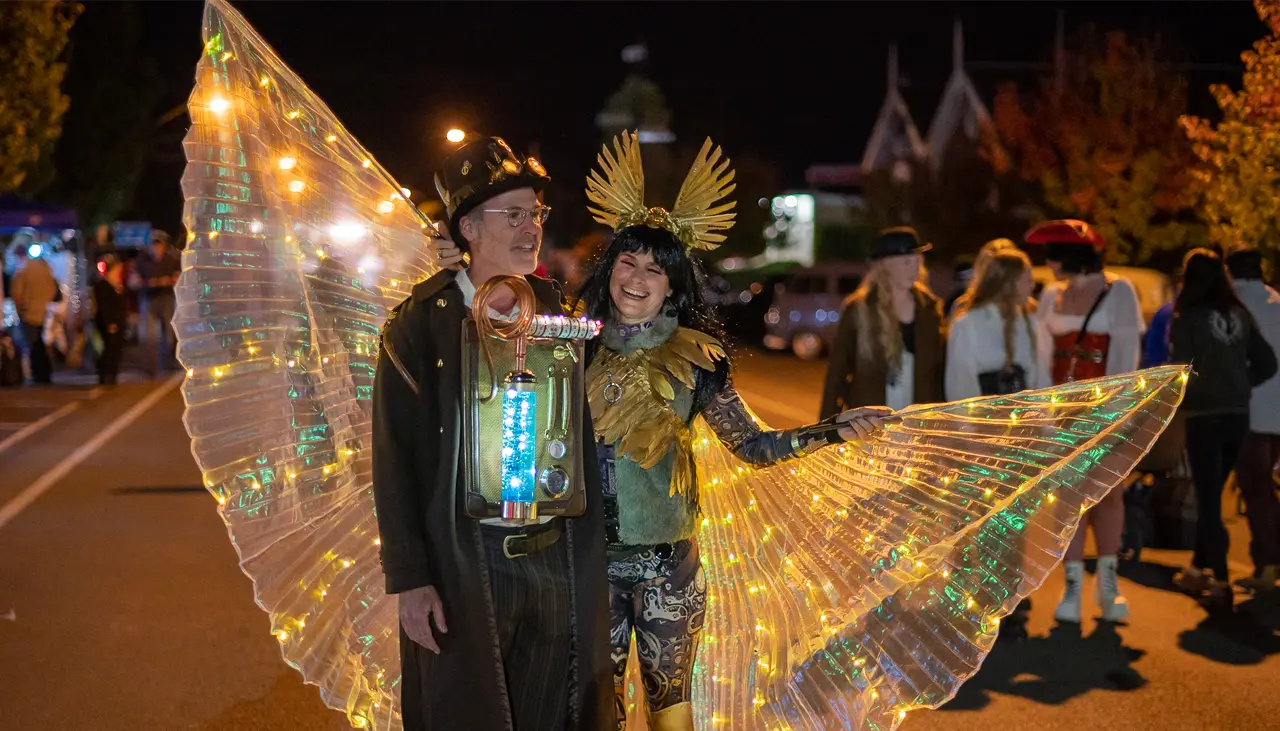The small Wimmera town of Dimboola is reinventing itself in unusual ways.
Story John Dunn Photo Robin Webb
For most of the time since government contractor Frederick Smith drew a plan for the Victorian Wimmera town of Dimboola in 1862, you could say it has kept a low profile. But not anymore. The arrival of Cambodian restaurateurs Chan and Jamie Uoy 4 years ago has heralded a reimagination, with the once conservative farming-based location now the centre of an edgy science-fiction festival and a gift emporium that aims to channel the great museums of London.
The Indigenous people of the area – the Wotjobaluk, Jaadwa, Jardwadjali, Wergaia and Jupagik peoples – called it Watchegatcheca, meaning many wattle trees and white cockatoos, while surveyor John Wilmot, who had lived in Ceylon, gave it the Sinhalese word Dimbula, meaning land of figs. It was actually called Nine Creeks for a while, but authorities settled on an anglicised version of Wilmot’s choice.
In the past, Dimboola was best known as the site of several famous landscape paintings – artist Sidney Nolan was stationed here in the 1940s during World War I – and as a name and base for the popular 1970s wedding comedy Dimboola by playwright Jack Hibberd.
Chan and Jamie decided they needed a change from 20 years of preparing fine food in their Melbourne restaurants at Docklands and Yarraville. They had a vision for what they called an ‘Imaginarium’, where one could be absorbed into a world of class and style. “We wanted to purvey a cross between a 19th-century English drawing room and one of the great museums of London,” Chan says. “A wondrous gift shop with old-fashioned charm, with a quirky escapism.”
The search led them to an imposing two-storey, red-brick, former bank building with a residence, garden and stables in out-of-the-way, grain-growing Dimboola. This grand structure opened with a flourish in 1909, when 250 white, male customers were invited to assemble out the front.
These exclusions did not escape the attention of the well-travelled couple as they began to stock their venture. There were Seletti lamps from Italy, a Murano chandelier, classic English chesterfields, Florentine art, vintage French colonial posters, statues of the Buddha, images of ancient temples, artworks by the renowned Tom of Finland, superb stationery from Budapest, a 16th-century Lutheran bible and, as the centrepiece,
an immense stuffed giraffe.
Today the Imaginarium truly is a magnificent and exotic display.
After an initial settling-down period of a couple of years, the couple launched a plan to draw further attention to the Imaginarium and to attract more visitors in the form of the Wimmera Steampunk Festival.
This story excerpt is from Issue #150
Outback Magazine: Aug/Sep 2023










